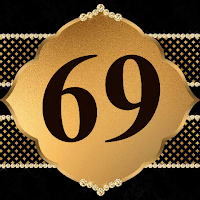In other words, the numeral
looks the same right-side up and upside down (e.g., 69, 96, 1001).
A strobogrammatic prime is a
strobogrammatic number that is also a prime number, i.e., a number that is only
divisible by one and itself (e.g., 11).
It is a type of ambigram,
words and numbers that retain their meaning when viewed from a different
perspective, such as palindromes.
When written using standard
characters (ASCII), the numbers, 0, 1, 8 are symmetrical around the horizontal
axis, and 6 and 9 are the same as each other when rotated 180 degrees.
In such a system, the first
few strobogrammatic numbers are:
0, 1, 8, 11, 69, 88, 96,
101, 111, 181, 609, 619, 689, 808, 818, 888, 906, 916, 986, 1001, 1111, 1691,
1881, 1961, 6009, 6119, 6699, 6889, 6969, 8008, 8118, 8698, 8888, 8968, 9006,
9116, 9696, 9886, 9966, ... (sequence A000787 in the OEIS)
The first few
strobogrammatic primes are:
11, 101, 181, 619, 16091,
18181, 19861, 61819, 116911, 119611, 160091, 169691, 191161, 196961, 686989,
688889, ... (sequence A007597 in the OEIS)
The years 1881 and 1961 were
the most recent strobogrammatic years; the next strobogrammatic year will be
6009.
Although amateur aficionados
of mathematics are quite interested in this concept, professional
mathematicians generally are not.
Like the concept of repunits
and palindromic numbers, the concept of strobogrammatic numbers is
base-dependent (expanding to base-sixteen, for example, produces the additional
symmetries of 3/E; some variants of duodecimal systems also have this and a
symmetrical x).
Unlike palindromes, it is
also font dependent.
Look it up on Wikipedia
Photo: Pixabay/Darkmoon_Art


No comments:
Click Here To add Comment
Post a Comment
Blogger Widgets